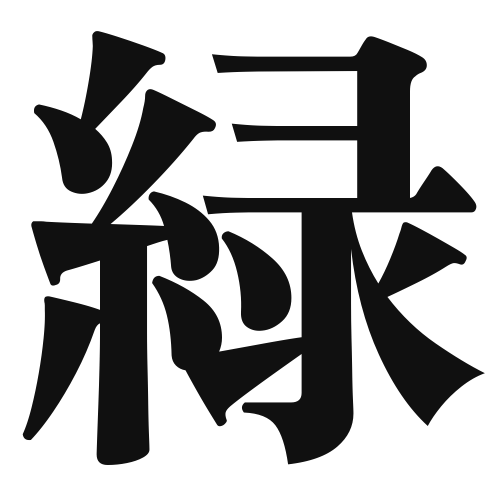1. Overview of Meaning
The kanji “緑” (pronounced “midori” in Japanese) means “green.” It represents the color associated with nature, growth, and freshness. In various contexts, it can symbolize life and renewal.
2. Formation and Radical
The kanji “緑” is a phonetic-ideographic character (形声文字), which combines the meaning of the radical and the sound. The left part, “糸” (ito), represents threads or fibers, while the right part, “緑” (the character itself) indicates the color green. The radical “糸” is commonly associated with textiles and threads.
3. Examples of Usage
Common words and phrases that include “緑” are:
- 緑茶 (ryokucha) – green tea
- 緑色 (midori iro) – green color
- 緑地 (ryokuchi) – green space
Example sentence in daily conversation:
「公園にはたくさんの緑があります。」
(There is a lot of green in the park.)
4. Synonyms and Antonyms
Similar kanji with related meanings include:
- 青 (ao) – blue, but can also mean green in some contexts, especially when referring to traffic lights.
- 草 (kusa) – grass, which is often green.
Antonyms include:
- 赤 (aka) – red, which represents a color opposite to green on the color wheel.
5. Cultural and Historical Background
In Japanese culture, the color green is often associated with nature and tranquility. It is a common color in traditional Japanese gardens and is celebrated in various festivals. Additionally, there are proverbs and idioms that reference green, such as:
- 「緑の中で心を休める」 (Midori no naka de kokoro o yasumeru) – “Rest your heart in the greenery,” emphasizing the calming effect of nature.
Overall, “緑” holds significant cultural value in Japan, symbolizing harmony and the beauty of the natural world.
